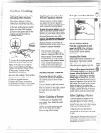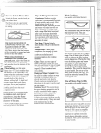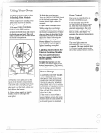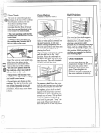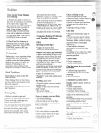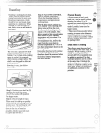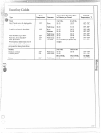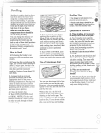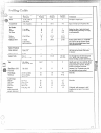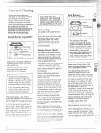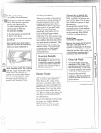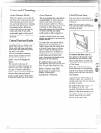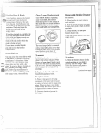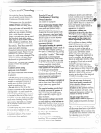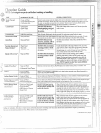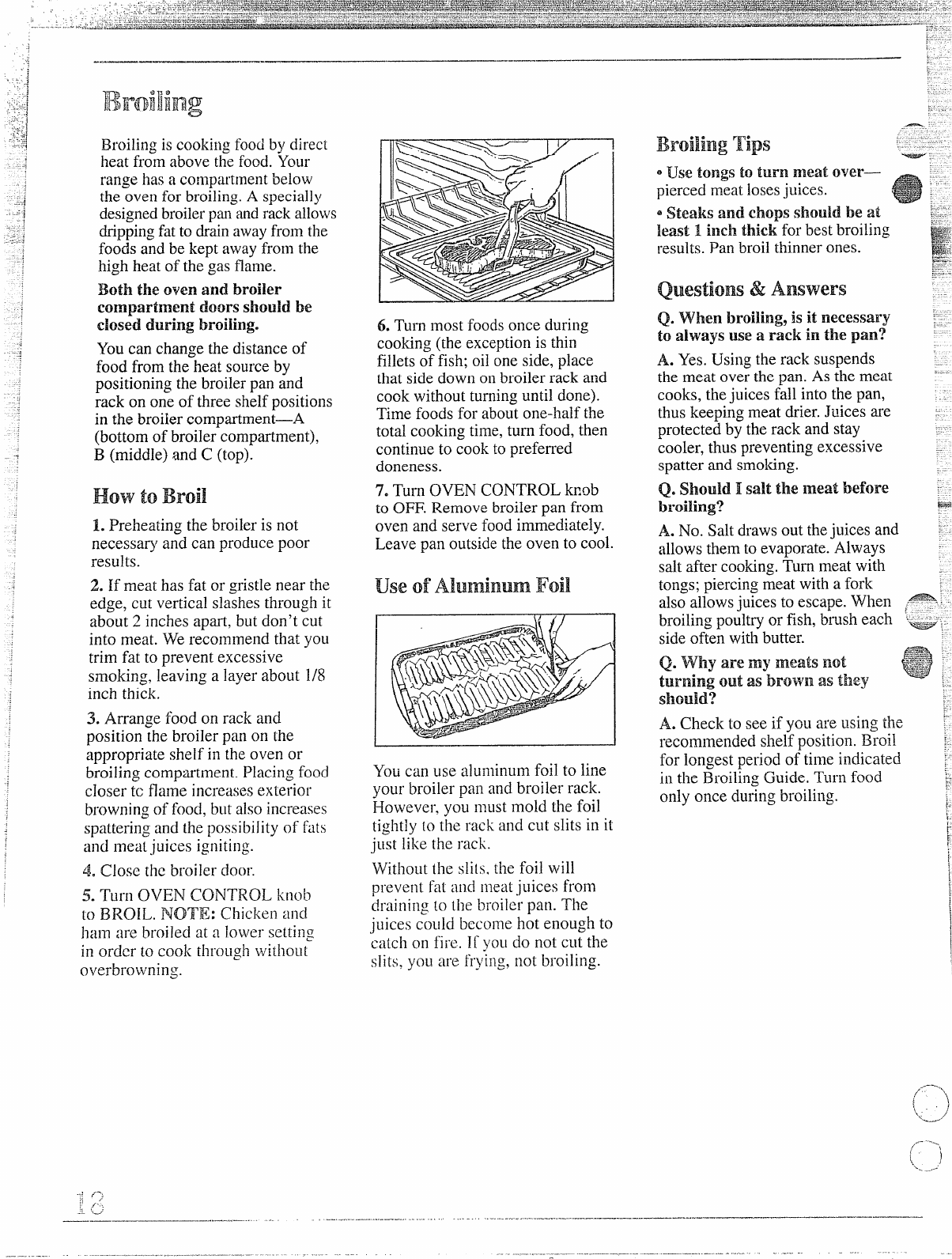
...—..—.—...
—.——. —.-—..——.——
Broiling iscookingfood by direct
heat from above the food.Your
range has a compartinentbelow
the oven for broiling.A specially
designedbroilerpan andrackallows
drippingfatto drainawayfrom the
foods and be kept away from the
high heat of the gas flame.
Both the oven and broiler
Compartinent doors should be
Closedduring broiling.
Youcan change the distanceof
food from the heat sourceby
positioningthe broilerpan and
rack on one of three shelf positions
in the broilercompartment-A
(bottom of broiler compartment),
B (middle)and C (top).
Ho$v to Broil
1. Preheating the broiler is not
necessary and can producepoor
results.
2. If meat has fat or gristle near the
edge, cut vertical slashesthrough it
about 2 inches apart, but don’t cut
into meat. We recom~mendthat you
trim fat to prevent excessive
smoking, leaving a layer about 1/8
inch thick.
3. Arrange food on rack and
position the broiler pan on the
appropriate shelf in the oven or
broiling compartment. P1acingfood
closer tc flame increasesexterior
browningof food, butalso increases
spatteringand the possibi]ity of
Fats
and meat
-juicesigniting.
40Close the broiler door.
5. Turn OVEN CONTROL knob
t[?BROIL, FlOTE: Chicken and
ham are broiled at a lower setting
in order to cook through wid~ou{
overbrowning.
6. Turn most foodsonce during
cooking (the exceptionis thin
fillets of fish; oil one side, place
that side down on broiler rack and
cook without turninguntil done).
Time foods for about one-halfthe
total cooking time, turn food, then
continue to cook to preferred
doneness.
~. Turn OVEN CONTROL knob
to OFF. Remove broilerpan from
oven and serve food immediately.
Leave pan outsidethe oven to cool.
use ofAlutinum Foil
You can use aluminum foil to line
your broiler pan and broi~errack.
However, you mustmold the foil
tightly {othe rack and cut slits in it
just like the rack.
Without the sli~s.the foil will
prevent rat and nleatjuices from
draining lo the broiler pan. The
juices coLildbcco]ne hot enough to
catch Onfire. ]f J’OL1C]Onot CLltthe
slits, you are frying, not broiling.
a use tongstoturnmleatover—
pierced meat losesjuices.
sSteaks andchops should be at
least 1 inch thick for bestbroiling
results.Pan broilthinnerones.
Questions & Answers
Q. when broiling, is it necessak”y
to alwaysuse a rack in the pan?
A. Yes. Usingthe rack suspends
the meat over the pan. As the meat
cooks, thejuices fall into the pan,
thuskeeping meat drier.Juices are
protected by the rack and stay
cooler, thus preventingexcessive
spatter and smoking.
Q. Should.1salt the meat before
broi~ing?
A.No. Saltdrawsout thejuices and
allowsthem to evaporate.Always
saltafter cooking.Turn meat with
tongs;piercing meatwith a fork
-.-
also allowsjuices to escape.When ~ -.
broilingpoultryor fish,brush each ==-
sideoften with butter.
SIlould?
A. Check to see if yoL~are using the :
recommended shelf position.Broil
:-
for longest period of time indicated
:-
in the Broiling Guide, TLI~II food
,.
:.
only once during broiling.
i
t
~
t
[
i
I
,.---..
(
‘)
./J
~—.



